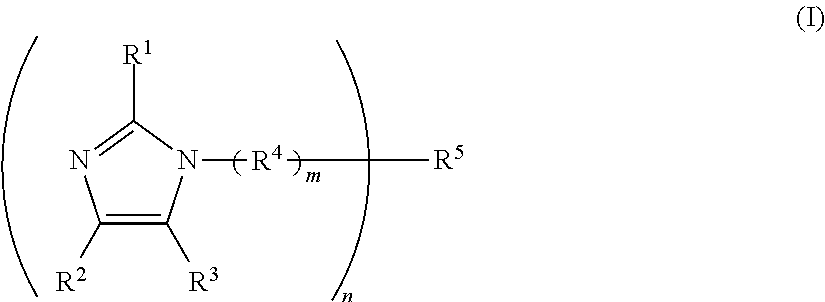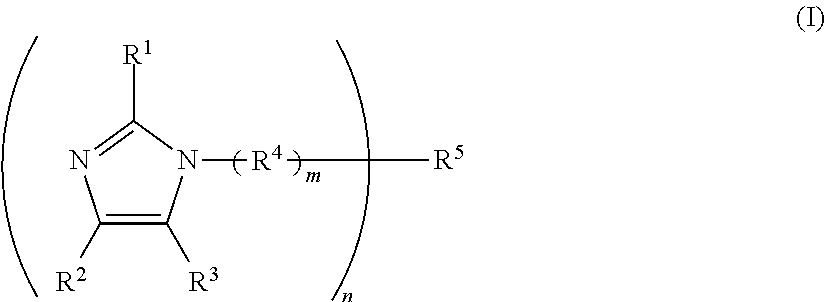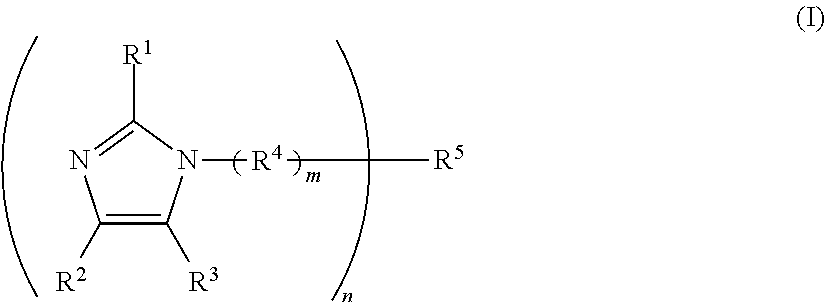One-component curable resin composition
a resin composition and one-component technology, applied in the field of one-component curable resin compositions, can solve the problems of poor workability, inability to cure at all, and inability to uniformly cure resin permeating into the gap, and achieve the effects of easy obtainable raw materials, excellent curing properties and storage stability, and low toxicity
- Summary
- Abstract
- Description
- Claims
- Application Information
AI Technical Summary
Benefits of technology
Problems solved by technology
Method used
Image
Examples
example 1
[0080]According to the composition shown in the following Table 1, a one-component curable resin composition was blended to prepare at room temperature, wherein the imidazole compound IM-3 that is liquid at ordinary temperature is contained as a latent curing agent.
example 2
[0088]According to the composition shown in the following Table 2, a one-component curable resin composition was blended to prepare at room temperature, wherein the imidazole compounds IM-3 and IM-7 that are liquid at ordinary temperature are contained as a latent curing agent.
[0089]With regard to the obtained one-component curable resin composition, the following evaluation was made. The results were shown in the Table 2.
[0090]
[0091]With regard to the one-component curable resin composition obtained in each example, the viscosity just after preparation (v0) and the viscosity after storing at 25° C. for 10 hours (v1) were measured by using a TV type viscometer (manufactured by TOKI SANGYO CO. LTD.) to calculate the thickening ratio [((v1 / v0−1)×100(%)] and the evaluation was made according to the following standard.[0092]⊚: Less than 10% of thickening ratio[0093]∘: Between 10% and 50% of thickening ratio[0094]Δ: Between 50% and 100% of thickening ratio[0095]x: More than 100% of thick...
example 3
[0106]According to the composition shown in the following Table 4, a one-component curable resin composition was prepared in the same way as Example 2 and the evaluation was made in the same way as Example 2. The results were shown in the Table 4.
PUM
| Property | Measurement | Unit |
|---|---|---|
| temperature | aaaaa | aaaaa |
| molar ratio | aaaaa | aaaaa |
| molar ratio | aaaaa | aaaaa |
Abstract
Description
Claims
Application Information
 Login to View More
Login to View More - R&D
- Intellectual Property
- Life Sciences
- Materials
- Tech Scout
- Unparalleled Data Quality
- Higher Quality Content
- 60% Fewer Hallucinations
Browse by: Latest US Patents, China's latest patents, Technical Efficacy Thesaurus, Application Domain, Technology Topic, Popular Technical Reports.
© 2025 PatSnap. All rights reserved.Legal|Privacy policy|Modern Slavery Act Transparency Statement|Sitemap|About US| Contact US: help@patsnap.com



